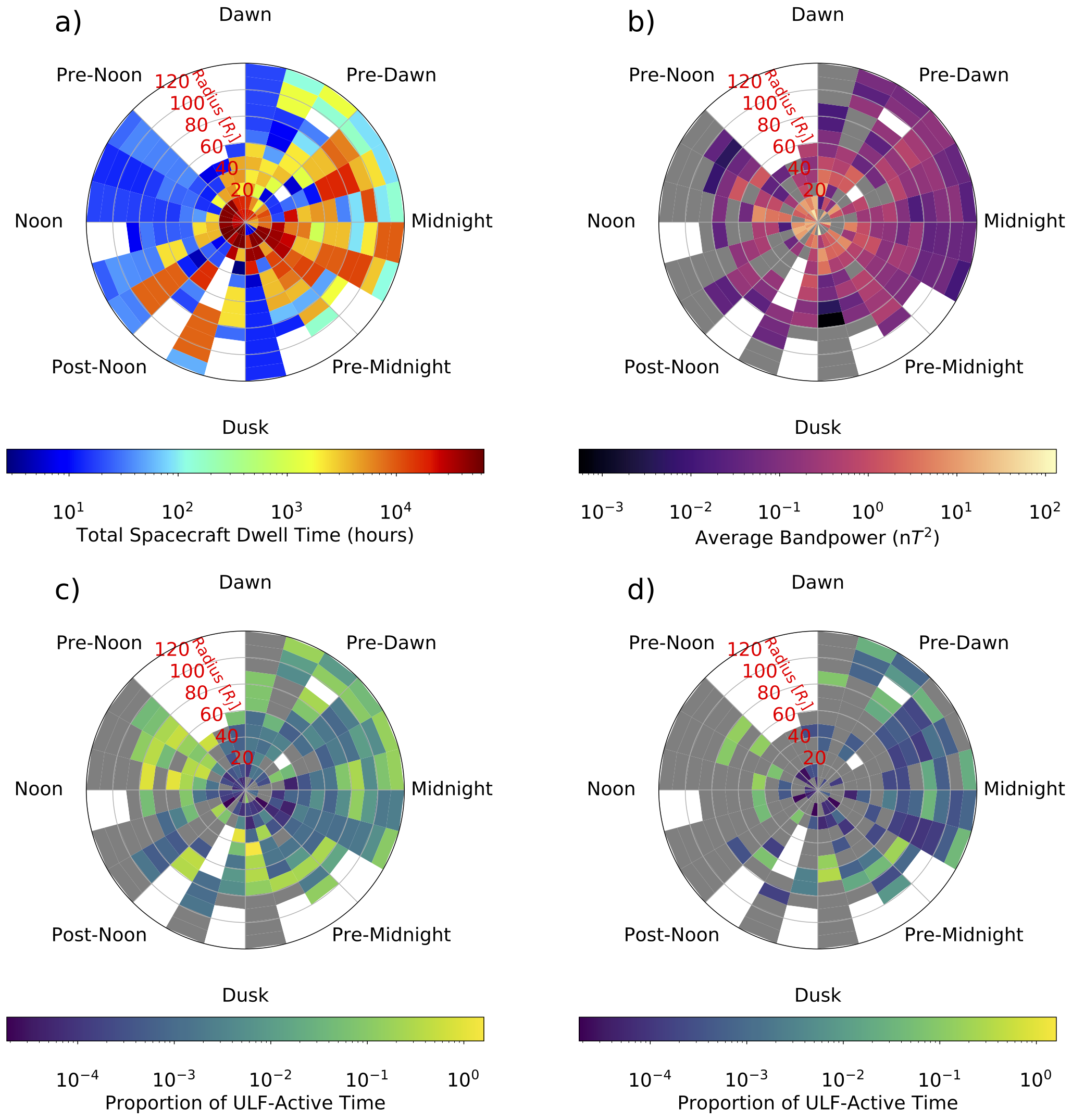MIST
Magnetosphere, Ionosphere and Solar-Terrestrial
The Global Distribution of Ultra‐Low‐Frequency Waves in Jupiter's Magnetosphere
By Arthur Manners (Imperial College London)
A key component to an understanding of Jupiter’s magnetosphere is how energy and momentum are transported through the system; how are perturbations communicated to regions many thousands of Earth radii distant? In the terrestrial magnetosphere, magnetohydrodynamic (MHD) waves with frequencies in the ultra-low-frequency band (~1mHz – 1Hz) play a key role in communication throughout the system, in some cases causing the magnetospheric cavity to resonate at its natural frequencies. The Jovian magnetosphere also seems to exhibit these phenomena but limited in-situ data has prevented a fuller picture from emerging. To remedy this, we have searched the heritage magnetometer data from Galileo, Ulysses, Voyager 1 & 2 and Pioneer 10 & 11 for ULF waves. The large plasma density in the equatorial magnetodisk and comparatively rarefied high-latitude regions means the Alfvén speed is orders of magnitude lower in the disk than elsewhere, effectively confining waves to the centremost region of the magnetic field lines.
We focused our study to data where spacecraft traversed the magnetodisk and constructed a catalogue of large-amplitude ULF waves. We found several hundred events with periods spanning ~ 5 – 60 mins, with preferential periods at ~ 15 mins, ~ 30 mins and ~ 40 mins, consistent with case studies in the literature. The resultant distribution can be seen in Fig. 1. Regions close to the magnetopause at noon and along the dusk flank appear to host ULF waves most often, suggesting an external driver (Fig. 1a). However, the waves seem to be most powerful in the inner magnetosphere, close to the plasma torus, suggesting wave energy may accumulate in the region (Fig. 1b). Further study of the torus region is ongoing to further probe these findings. Overall, these results provide crucial information into large scale energy transport and pathways in Jupiter's complex magnetosphere, with significant implications for wider magnetospheric processes.

Fig. 1: An equatorial-plane projection of: (a) the total time spacecraft spent in each bin; (b) the ULF bandpower averaged over the events in each bin; (c) the proportion of time spacecraft spent in each region where significant ULF activity was observed; (d) the same as (c) but for the subset of events where only a single significant period was observed. White bins signify where there are no available data, and gray bins signify regions where spacecraft visited but observed no events.
Please see the paper for full details:
, & (2020). The global distribution of ultralow‐frequency waves in Jupiter's magnetosphere. Journal of Geophysical Research: Space Physics, 125, e2020JA028345. https://doi.org/10.1029/2020JA028345